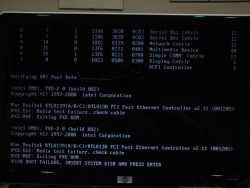 Have you seen “Last BIOS time” in the Windows Task Manager? Many users aren’t even aware that such a feature exists. Here, we will look into what “Last BIOS time” in the Windows means and the technique to reduce it to improve the PC boot time.
Have you seen “Last BIOS time” in the Windows Task Manager? Many users aren’t even aware that such a feature exists. Here, we will look into what “Last BIOS time” in the Windows means and the technique to reduce it to improve the PC boot time.
Understanding “Last BIOS Time” in the Windows Task Manager
Last BIOS Time is the actual time duration taken by your PC to initialize the hardware before the booting of Windows begins, when you switch on your PC. During the booting process of your system, it loads BIOS also known as “UEFI” firmware from the chip present in the system’s motherboard. The BIOS is a tiny program whose function is to initialize the hardware, apply various settings in the hardware and then give the control back to the system’s boot loader. This boot loader boots the operating system of your PC. By pressing keys like F2, F10 or ESC, you can access UEFI firmware settings when your system is booting up.
When it is booting, it will display the logo given by your computer PC or of the motherboard. It will also display some messages or display a dark screen till your Windows begins booting. So, in short, “Last BIOS Time” in the Windows Task Manager is the amount of time it took for the system to start booting your Windows.
Viewing the “Last BIOS Time” in the Windows Task Manager
Now that you understand more about “Last BIOS Time” in the Windows, let’s see how to view it. You need to open your Task Manager and then by hitting “CTRL + Shift + Escape,” click on the “Startup” tab or “More details” that is displayed at the lowest portion. This feature is available on Windows 8 operating systems and higher.
Decreasing the “Last BIOS TIME”
Now, let us see how you can decrease the “Last BIOS Time” in the Windows Task Manager. You need to keep in mind that you can never reduce the time to 0. If it shows 0 seconds, that means there is an issue with your BIOS. Your last BIOS time must be quite a low number. If you are using the latest PC, this time will be around 3 seconds. If the PC is taking more than 30 seconds, it means there is something wrong with your BIOS and you need to decrease the time.
By making some modifications to the BIOS settings, you can reduce the time. But, it depends on your hardware. By disabling some features like memory check, you can reduce the time. If there is any hardware that your system is not using, you can disable such hardware to improve the performance. If your system has an old motherboard, then the time displayed in the Last BIOS time will be higher. Upgrading your motherboard will improve the performance.
Conclusion
Most people find it difficult to understand what “Last BIOS time” means. Once you understand what it is, you can monitor how your system is performing. Making changes to your BIOS setting will improve the performance of your system. So, next time when someone asks you what “Last BIOS time” in the Windows Task Manager is, you can explain its functions, uses and importance to them easily.

 Email article
Email article



